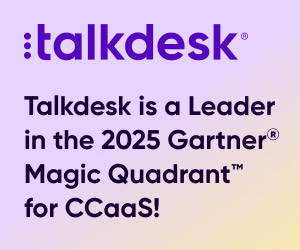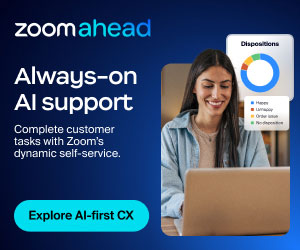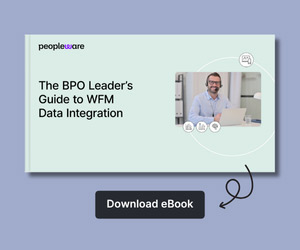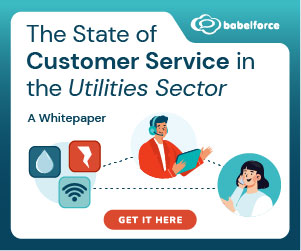Outbound activity has evolved so much that success today looks very different than it did just a few years ago. So, what does it mean to deliver a great outbound strategy right now?
In an ever-changing world of stricter regulations, changing customer expectations, and the need for more personalized engagement, we asked the experts to find out!
“Always Initiate Contact on a Customer’s Preferred Channel”

Great outbound is ultimately about respect for the recipient. Wherever possible it should be initiated on their preferred channel, with the option to pivot to another channel if appropriate.
Additionally, it should be done at a time that is convenient to them. With companies holding more data about customers than ever before, they can avoid simple missteps such as calling a night shift worker at 9am.
Not only that, but it should be clear as to why you are contacting them from the start, and you should also be transparent about any follow-on actions which will happen off the back of the contact.
Contributed by: Russell Healey, Senior Technical Solution Consultant, Route 101
“Encourage Your Outbound Team to Think About Touchpoints – Not Tasks”

What if outbound wasn’t just about sales or support but about shaping how people remember your brand? Every call is a small moment that adds to that story.
It might be a follow-up that feels surprisingly thoughtful, or a message that calls back to something the customer said months ago. These aren’t just tasks. They’re touchpoints that create memories.
The best outbound teams are starting to think this way. They’re not just focused on the outcome of the call. They’re thinking about the impression it leaves behind.
In a world where products look the same and marketing gets tuned out, these personal, human conversations are what stand out. And over time, they become the reason someone picks up the phone next time.
Contributed by: John Ortiz, AI and Voice Analytics Consultant, MiaRec
“Identify the Language Top Performers Are Using and Share It With the Rest of the Team”

Great outbound evolves from taking the knowledge from your best interactions and applying it at scale. For example:
- What are the most successful rebuttals to common objections?
- What are the most popular cross-sell offers for customers who have purchased certain products?
- What questions should your agents proactively answer?
You can use conversation intelligence technology to analyse all your interactions and identify the behaviours, offers, and language your top performers are using, and then build those best practices into real-time coaching prompts using AI-powered agent assist software.
This gives all your agents the best possible chance of achieving desirable business outcomes and provides a consistently high-quality outbound experience.
Contributed by: Simon Black, Chief Operating Officer, Creovai
“Enrich Conversations by Connecting Agents to Those With Similar Interests”

One way to transform your outbound from an interruption to engagement is to use intelligence-led targeting – using business information to prioritize resources, ensuring you reach the right contacts at the right time.
You could also enrich the quality of conversations by connecting agents with contacts who share similar interests (e.g. supporting the same football team, or coming from the same hometown).
When you can be human and empower your agents with context-aware cues to help them adapt scripts in real time, this makes conversations feel more authentic and natural too.
Contributed by: Zainab Ahmed, Marketing Manager, Peopleware
“Invest in Number Reputation Management to Earn Trust Before the Call Connects”

Great outbound today is about earning trust before the call connects.
With devices and operating systems increasingly screening or blocking numbers flagged as potential spam, businesses can’t rely on volume alone – they need a safe, compliant outbound strategy that protects both the brand and the customer.
This means investing in number reputation management, being smart with numbers, and ensuring calls are aligned to customer preferences and consent.
Contributed by: Tara Aldridge, Strategic Services Director, Vonage
“Show Each Customer You Know Them and Are Always on Their Side”

The old-school view of outbound is a numbers game: high-volume, interruptive dialling meant to push a product or collect a survey response. It’s transactional and treats the customer like a statistic – a fundamentally flawed mindset.
Great outbound is about proactive engagement. It’s a strategic act built on context and trust.
When you have a relational mindset, outbound becomes a force for loyalty and growth.
This means you’re:
- Solving problems before they happen – You reach out to the customer before they even know there’s a problem.
- Building on history – You use a customer’s full journey, their past conversations, purchases, and preferences, to make every interaction personal.
- Creating seamless experiences – Outbound isn’t a silo. It’s just another step in a continuous conversation that moves effortlessly between channels.
The goal isn’t to hit a quota. The goal is to show the customer you know them, you value them and are always on their side.
Contributed by: Matthew Clare, VP, Product Marketing, UJET
“Lean Into Real-Time Decisions About Which Agents Are Most Likely to Convert”

Great outbound starts with intelligent resource allocation. Your dialler should be making real-time decisions about which agents handle which contacts, based on skill match, contact history, and likelihood to convert.
Static call lists are dead – dynamic prioritization keeps your team focused on the conversations that matter.
You also should know your contact rates, agent utilization, and right-party connects in real time. If you’re relying on end-of-day reports to understand performance, you’re managing yesterday’s problems.
The best operations use live data to adjust pacing, redistribute workload, and maximize productive conversation time throughout the shift.
Contributed by: Ben Booth, CEO, MaxContact
“Think Beyond Just Compliance and Really Maximize the Data You Have to Hand”

Great outbound is not just about voice any more, and with the plethora of data available in most organizations it should be very targeted as well. If this is not how your outbound contact is, then some self-reflection needs to be done, and improvements made.
The organizations who are doing outbound well are not just trying to remain compliant with legislation – that is the absolute minimum, they are trying to maximize their data, and I don’t mean just looking at best time to dial to maximize right party contact (RPC) rates.
They are taking lots of data points in, understanding the customer and then reaching out in their preferred channel with a tailored offering. The days of a scattergun approach to outbound should be at an end and the use of AI across this data should only make this better over the coming months and years.
Contributed by: Dave Vernon, The Forum
“Make Sure Every Interaction Feels More Like a Conversation Than a Campaign”

Great outbound comes with contact centre managers understanding that pumping out a million calls and hoping for some answers may not be the way to go.
Using tools to find relevant customers to call is far better than aiming for big volume. Relevance drives results. That means leveraging real-time insights to reach customers on their terms, across voice, chat, messaging apps like WhatsApp and elsewhere online.
Ideally, every interaction should feel more like a conversation than a campaign. When AI can predict intent, personalize content, and summarize conversations, while still enabling seamless hand-off to a human agent, you build trust, not just pipeline.
Contributed by: Chris Angus, VP of VP CPaaS & CX Expansion, 8×8
“Combine Digital Channels With Calls to Create a Less Intrusive Experience”

Personalization is always the main differentiator in CX, where customers expect agents to understand their needs, context and history before even attempting contact.
Machine learning and AI-powered technology can help with the analysis and predictions and, increasingly, suggesting tailored messaging.
Great outbound also relies on meshing multiple channels together. SMS, email and digital messaging platforms can be combined with calls to create a more seamless, less intrusive (and more cost-effective) experience.
Contributed by: Lewis Gallagher, Senior Solutions Consultant, Netcall
“Focus Your Efforts on Individual, High-Value Calls – Not a Broad Campaign”

Today, outbound calls are very different. Rather than being unsolicited, they are typically interactions customers want, such as proactive alerts or specific information about a pending delivery.
Increasingly, outbound is not a broad campaign but an individual, high-value call, such as a clinician calling patients back following an assessment.
In these scenarios, the dialler imports a list, prioritizes by urgency, and displays the customer’s details on screen before connecting the call. Here, patients may be briefly pre-called and placed in a waiting area before being connected to the outbound agent.
Customers are generally willing to wait a short time, and efficiency is maximized by ensuring one or two agents are always available to take the next call.
Contributed by: Martin Taylor, Co-Founder and Deputy CEO, Content Guru
“Lean Into a Culture of Testing and Refinement”

Success requires a culture of testing and refinement: subject lines, call times, and messaging should be continuously reviewed and optimized based on real performance data. The best outbound operations combine compliance and transparency with rigorous data-driven execution.
A disciplined, strategic approach delivers measurable business impact while still feeling highly personal to customers. So great outbound today is really the intersection of technology-enabled efficiency and human-centred communication.
Contributed by: Niels Richthof, Product Manager, Enghouse Interactive
Outbound Is No Longer About Volume!
Great outbound isn’t about the number of dials made, it’s about the quality of every moment of contact. By combining compliance, personalization, and real-time insight, modern outbound teams are creating experiences that feel more like conversations than campaigns.
In the end, the companies that win will be those who treat outbound not as an interruption but as an opportunity to deliver relevance, respect, and genuine human connection.
How Is Your Outbound Strategy Evolving?
Click here to join our Readers Panel to share your experiences and feature in future Call Centre Helper articles.
For more great insights and advice from our panel of experts, read these articles next:
- The Secrets to Scheduling Multiskilled Agents
- What’s Next for Voice of the Customer (VoC)?
- Where Do WFM Systems Have the Biggest Impact?
Author: Megan Jones
Published On: 14th Oct 2025 - Last modified: 22nd Oct 2025
Read more about - Customer Service Strategy, 8x8, Ben Booth, Chris Angus, Content Guru, Creovai, Customer Experience (CX), Dave Vernon, Editor's Picks, Enghouse Interactive, John Ortiz, Lewis Gallagher, Martin Taylor, Matthew Clare, MaxContact, MiaRec, Netcall, Niels Richthof, Outbound, Peopleware, Route 101, Service Strategy, Simon Black, Tara Aldridge, The Forum, Top Story, Training and Coaching, UJET, Vonage, Zainab Ahmed









































